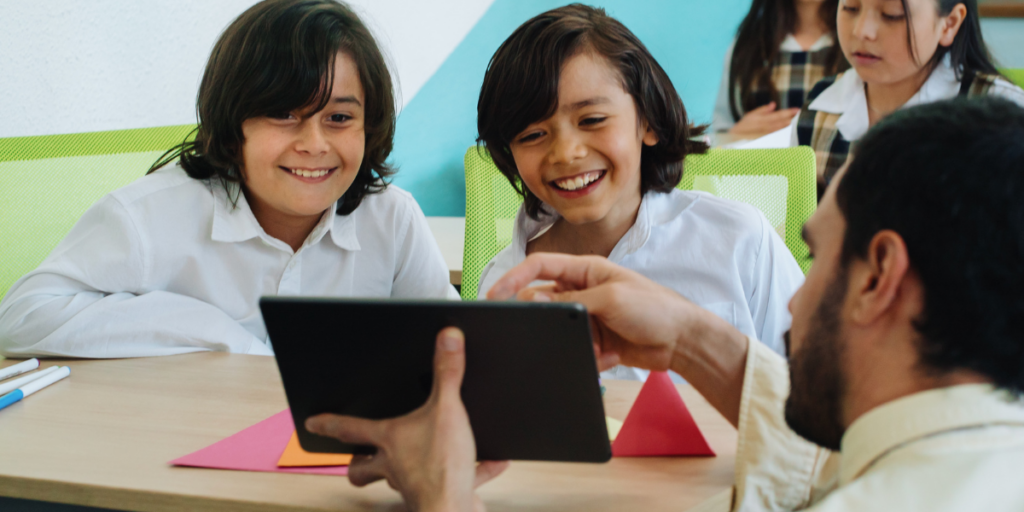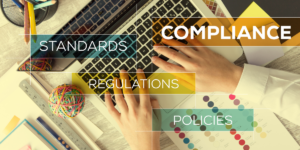The integration of Social-Emotional Learning (SEL) into special education is no longer a theoretical best practice—it is an evidence-based imperative. As educators face rising behavioral challenges, teacher attrition, and disparities in academic outcomes for students with disabilities, SEL provides a critical framework to support both the academic and holistic development of exceptional learners.
💡 You can also download this resource as a PDF here.
Why SEL Matters More in Special Education
Students with disabilities (SWDs) are at significantly higher risk for social-emotional difficulties. According to a 2022 report by the National Center for Education Statistics (NCES), students with disabilities are twice as likely as their non-disabled peers to exhibit behavior that disrupts classroom learning (NCES, 2022). Moreover, the Centers for Disease Control and Prevention (CDC) estimates that nearly 1 in 5 children with a mental, emotional, or behavioral disorder also receives special education services (CDC, 2023), illustrating the overlap between disability status and social-emotional needs.
The Collaborative for Academic, Social, and Emotional Learning (CASEL) defines SEL as the process through which individuals acquire and effectively apply knowledge, attitudes, and skills necessary to understand and manage emotions, set and achieve goals, feel and show empathy for others, establish positive relationships, and make responsible decisions (CASEL, 2023). For students with disabilities—who often face unique challenges with self-regulation, communication, and peer interactions—explicit SEL instruction isn’t supplemental; it is foundational.
The Research Case: SEL’s Impact on SWDs
Meta-analyses over the last decade have demonstrated SEL’s broad impact, but more recent disaggregated data shows its effectiveness for students in special education:
- A 2023 synthesis from the American Institutes for Research (AIR) found that SEL interventions in special education settings led to an average 22% improvement in emotional regulation and a 19% reduction in problem behaviors (AIR, 2023).
- The University of Minnesota’s Center for Applied Research and Educational Improvement (CAREI) conducted a longitudinal study on SEL-infused Individualized Education Programs (IEPs). Schools implementing integrated SEL approaches reported a 32% decrease in discipline referrals and 21% improvement in IEP goal attainment over two academic years (CAREI, 2023).
- According to the U.S. Department of Education’s What Works Clearinghouse, SEL programs such as Second Step, PATHS, and RULER show strong evidence of effectiveness when adapted for learners with autism, ADHD, and emotional-behavioral disorders (WWC, 2023).
Implementation Challenges and Policy Considerations
Despite the benefits, SEL integration in special education is not uniformly applied. A 2021 national survey by the Council for Exceptional Children (CEC) found that only 42% of special educators reported access to high-quality SEL curricula adapted for diverse learning needs (CEC, 2021). Furthermore, fewer than 1 in 3 teacher preparation programs in the U.S. include SEL as a formal component of their coursework on exceptional learners (Learning Policy Institute, 2024).
From a systems perspective, there are three core challenges:
- Curricular Alignment: Most SEL frameworks are built for neurotypical learners and assume baseline communication and cognitive skills. These must be deconstructed and adapted for accessibility—especially for students with moderate to severe disabilities.
- Data Integration: Traditional SEL assessments (e.g., student self-report surveys) are often invalid for nonverbal or lower-functioning students. Emerging tools like the Social-Emotional Engagement–Knowledge and Skills (SEE-KS) framework offer more inclusive alternatives, but adoption remains inconsistent (SEE-KS, 2023).
- Workforce Readiness: Implementation fidelity hinges on educator confidence and skill. Yet, a 2024 Learning Policy Institute report revealed that over 60% of special educators feel “underprepared” to teach SEL competencies in their classrooms, especially around culturally responsive and trauma-informed practice (Learning Policy Institute, 2024).


Models of Excellence: Leading the Way
Some states and districts are pioneering comprehensive approaches. Wisconsin’s Department of Public Instruction, for instance, has developed Guiding Principles for Teaching SEL in Special Education, emphasizing Universal Design for Learning (UDL), Positive Behavioral Interventions and Supports (PBIS), and restorative practices as pillars of implementation (Wisconsin DPI, 2024).
Milwaukee Public Schools has also piloted a tiered SEL program embedded in its special education classrooms, showing a 15% increase in student attendance and a 27% reduction in behavioral incidents within two years. Notably, the district employs cross-disciplinary teams that include school psychologists, speech-language pathologists, and SEL coaches to co-develop individualized supports (Milwaukee Public Schools, 2024).
Moving Forward: Recommendations for Systemic Integration
To effectively integrate SEL in special education at scale, the following strategies are critical:
Embed SEL in IEPs:
Rather than treating SEL as a standalone initiative, it should be embedded in IEP goals, progress monitoring, and transition planning. This ensures legal accountability and instructional continuity.
Too often, SEL is siloed from special education services. IEP teams should include specific SEL competencies—like self-awareness, emotional regulation, and relationship skills—as part of a student’s goals and accommodations. This doesn’t mean adding more; it means aligning what we’re already doing with language that fosters SEL.
Example: In Elk Grove Unified School District (California), SEL objectives are embedded into IEPs using CASEL-aligned competencies. For instance, a student with ADHD might have a goal like: “By the end of the semester, the student will demonstrate self-management by using a visual calm-down strategy in 4 out of 5 observed opportunities.” (CASEL, 2023).
This practice is backed by research suggesting that SEL-linked IEP goals increase student engagement and improve behavioral outcomes (CAREI, 2023).
Expand Educator Training:
State education agencies and teacher prep programs must offer robust, hands-on training in adapted SEL instruction. Focus areas should include trauma-informed practice, co-regulation strategies, and culturally sustaining pedagogy.
Professional development around SEL often targets classroom teachers alone, excluding paraprofessionals, therapists, and administrators. Districts must design team-based training that includes all stakeholders in a student’s support ecosystem.
Example: Madison Metropolitan School District (Wisconsin) developed cross-functional SEL professional learning communities that include special educators, school psychologists, SLPs, and behavior analysts. These teams co-plan interventions and analyze outcomes collaboratively. Their internal data showed increased implementation fidelity and fewer behavioral escalations across classrooms (Wisconsin DPI, 2024).
This approach mirrors national recommendations that collaborative SEL teams yield more consistent outcomes in inclusive settings (Learning Policy Institute, 2024).
Utilize Assistive Technology:
Tools such as AAC devices, emotion regulation apps (e.g., Zones of Regulation), and visual schedules can scaffold SEL instruction for students with complex needs (Kuypers, 2021).
Technology offers scalable ways to support SEL, particularly for students with communication, cognitive, or behavioral challenges. Visual schedules, SEL apps, and emotion regulation frameworks like Zones of Regulation can provide concrete supports that generalize across environments.
Example: In Austin ISD (Texas), educators adapted Mood Meter visuals from the RULER program for use with low-literacy and nonverbal students. Color-coded visuals paired with simplified language and routine check-ins allowed students with autism to self-report emotions more accurately, resulting in fewer classroom disruptions (Brackett et al., 2019).
Leverage Multi-Tiered Systems of Support (MTSS):
Incorporating SEL into Tier 1 universal supports and providing targeted interventions through Tier 2/3 services ensures all students—regardless of label—can access meaningful SEL instruction.
SEL must be embedded within a Multi-Tiered System of Supports (MTSS), with universal instruction (Tier 1) offered to all students, and more intensive supports (Tiers 2 & 3) tailored to individual needs. A recent review of MTSS practices found that embedding SEL across all tiers led to improved student behavior and reduced special education referrals (AIR, 2023).
Example: Sun Prairie Area School District (Wisconsin) uses Universal Design for Learning (UDL) to adapt Tier 1 SEL content for learners with disabilities. For example, core SEL lessons are delivered with visual scaffolds, AAC devices, and social scripts to ensure all students can engage (Wisconsin DPI, 2024).

Conclusion
As the public education system faces a surge in behavioral challenges and unmet mental health needs, integrating SEL into special education is not a luxury—it is a necessity. The data is clear: when done well, SEL improves emotional wellness, academic performance, and long-term outcomes for students with disabilities. The challenge is not whether we should integrate SEL into special education, but how quickly and equitably we can do so.
References
American Institutes for Research. (2023). Social-emotional learning interventions and outcomes for students with disabilities. AIR. https://www.air.org
CASEL. (2023). Fundamentals of SEL. Collaborative for Academic, Social, and Emotional Learning. https://casel.org/fundamentals-of-sel/
CAREI. (2023). Evaluating SEL integration in individualized education programs. University of Minnesota, Center for Applied Research and Educational Improvement. https://www.cehd.umn.edu/research/CAREI/
CDC. (2023). Children’s mental health data and statistics. Centers for Disease Control and Prevention. https://www.cdc.gov/childrensmentalhealth/data.html
Council for Exceptional Children. (2021). SEL and special education: National teacher survey findings. https://exceptionalchildren.org
Kuypers, L. M. (2021). The Zones of Regulation: A curriculum designed to foster self-regulation and emotional control. Think Social Publishing.
Learning Policy Institute. (2024). Teacher preparation and SEL for students with disabilities. https://learningpolicyinstitute.org
Milwaukee Public Schools. (2024). Internal SEL pilot report: Tiered supports in special education. https://mps.milwaukee.k12.wi.us/
National Center for Education Statistics. (2022). Students with disabilities and school discipline. U.S. Department of Education. https://nces.ed.gov/
SEE-KS. (2023). Social-emotional engagement – knowledge and skills framework. https://www.seekingsel.com/
U.S. Department of Education, What Works Clearinghouse. (2023). Social-emotional learning interventions review. https://ies.ed.gov/ncee/wwc/
Wisconsin Department of Public Instruction. (2024). Social-emotional learning in special education: Guidelines and tools. https://dpi.wi.gov/sspw/sel
American Institutes for Research. (2023). Social-emotional learning interventions and outcomes for students with disabilities. AIR. https://www.air.org
Brackett, M. A., Rivers, S. E., Reyes, M. R., & Salovey, P. (2019). RULER: A theory-driven approach to social-emotional learning. Yale Center for Emotional Intelligence.
CASEL. (2023). SEL integration and IEP alignment guidance. Collaborative for Academic, Social, and Emotional Learning. https://casel.org
CAREI. (2023). Evaluating SEL integration in individualized education programs. University of Minnesota, Center for Applied Research and Educational Improvement. https://www.cehd.umn.edu/research/CAREI/
Learning Policy Institute. (2024). Teacher preparation and SEL for students with disabilities. https://learningpolicyinstitute.org
Wisconsin Department of Public Instruction. (2024). SEL in special education and UDL alignment. https://dpi.wi.gov/sspw/sel
About the Author: Stephen Letizia has been with Go Solutions since 2021, bringing extensive experience in the special education software industry. He started his career at Oasys, a Wisconsin-based student services company, where he managed customer success and compliance. After the merger of Oasys and Go Solutions in late 2020, he moved into sales as Business Development Manager. In 2024, he was promoted to Sales Operations Team Lead, where he manages all sales initiatives. Stephen, who has presented at special education conferences across multiple states, is based in Milwaukee, WI.





